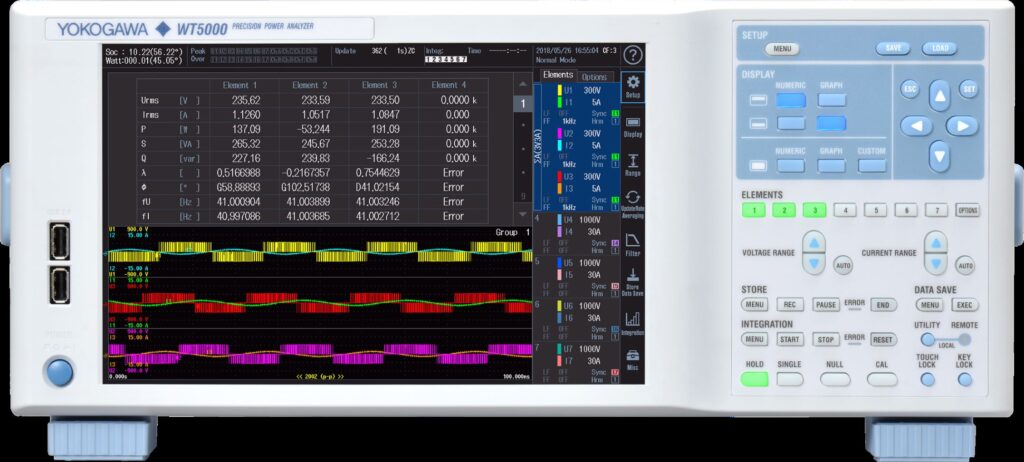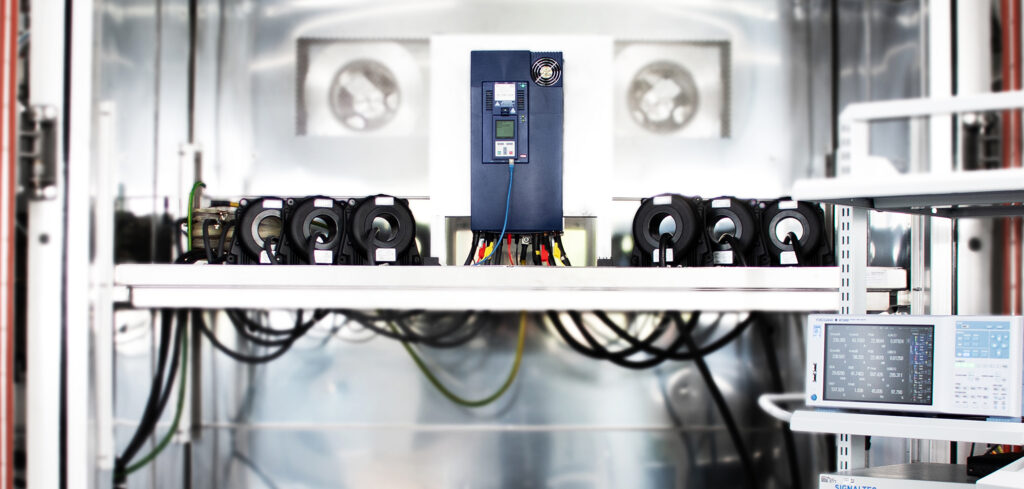Variable speed drives are capable of delivering significant power savings, as they reduce the power input when driving motors at less than the maximum rated load. To further enhance their performance, motor drive manufacturers are introducing faster switching capabilities. To save additional space and weight, this type of motor drive also uses smaller capacitors and magnetic components.
Automation and motion control specialist KEB Automation is using Yokogawa’s WT5000 Precision Power analyzer to develop its latest generation of frequency converters for variable speed drives, ensuring they meet the latest European Union (EU) energy efficiency regulations. The EU’s latest requirements, called the Ecodesign Directive, outline new regulations surrounding the energy efficiency of drives and automation equipment. A challenge, however, is that faster switching makes it harder to get accurate measurements of key power parameters including voltage and current because of the higher level of common mode noise present. But extremely accurate power measurements are needed to enable manufacturers to fine-tune their motor drive systems to maximize efficiency.
“Fast-switching semiconductors generate common-mode voltages at high frequencies, inducing parasitic common-mode currents even in small capacitances,” said David Kater, development engineer at KEB. “We only want to see the differential mode in the measurement, which is why common-mode rejection is extremely important.”
Germany-based KEB utilizes power analyzers at multiple stages of a product’s lifecycle, including in the development of the design, for final validation of the design’s performance and also to prove the characteristics of production units. Developing frequency converters for drives requires analyzers which can maintain accurate measurements of power parameters.
To ensure accuracy, the measurement equipment must deliver high common-mode noise rejection, as the output voltages of the inverters display high dV/dt, producing spectral components at very high frequencies.
KEB conducted an analysis of similar products and found that the analyzer most suited to the company’s requirements was the Yokogawa WT5000. Analysis of its performance showed KEB engineers that the currents due to common mode noise were at an extremely low level, outperforming KEB’s previous analyzer – also a Yokogawa product.
During tests of the WT5000, KEB found no significant crosstalk from channels affected by common-mode noise to other channels, even when operating at the system’s full measurement bandwidth of 5MHz for current and 10MHz for voltage. The WT5000’s power measurements are accurate to 0.01% (reading) and 0.02% (range) at AC mains frequency (50/60Hz). Furthermore, the WT5000 also benefits from a guaranteed accuracy of ±0.03%, is capable of conducting harmonic comparisons up to the 500th order and offers custom computation facilities. This ensures the WT5000 produces multi-channel measurements which the user can trust.
Designed for versatility, the WT5000 includes seven slots for user-swappable input elements, in addition to a number of mainframe options. The solution can evaluate up to four motors simultaneously while enabling the user to expand or reconfigure the instrument as applications and needs change. Additionally, the WT5000 can also stream its raw captured data to a PC for detailed analysis.
The WT5000 benefits from a full touchscreen and is supported by hardware hotkeys and powerful software for remote measurements.
“I really like the modular design of the channels on the WT5000. KEB has used the seventh channel, for example, to measure auxiliary power supplies or the DC link, while the first six are measuring the input and output of the drive controller,” said Kater. “The WT5000 also helps make engineers more productive with features such as immediate recognition of the module configuration after switching on, followed by automatic initialization of the channels.
“Intuitive navigation also reduces the time it takes to configure and run a test – it is easy to bring up and select menus via the touchscreen,” added Kater. “The WT5000’s extremely high immunity to common-mode noise and the high channel-to-channel isolation indicate to me that I can safely rely on the instrument when analyzing the voltages and currents which are switched by semiconductor power components.”



